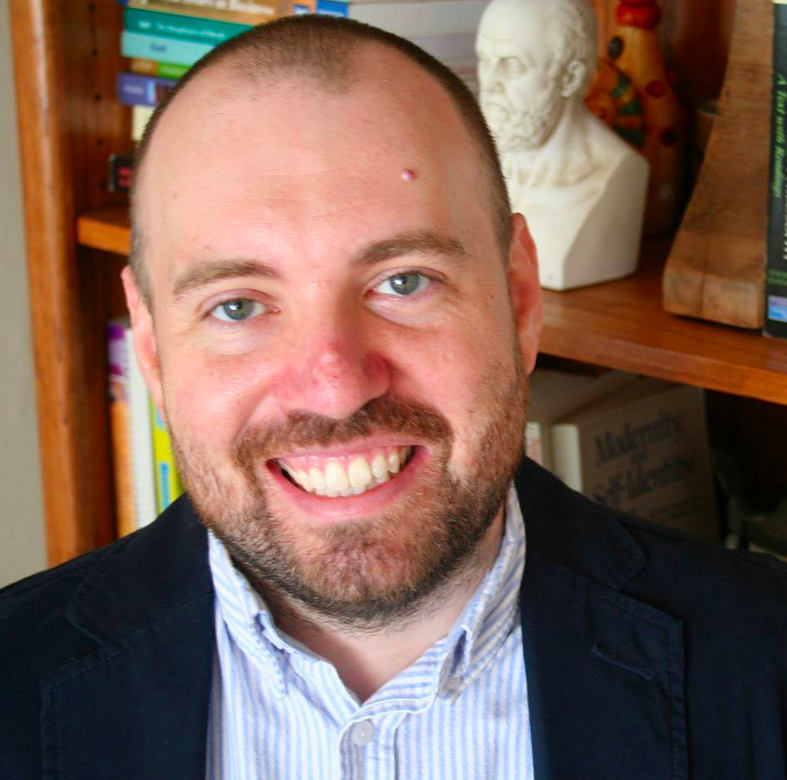Web-Based
Publication Types:
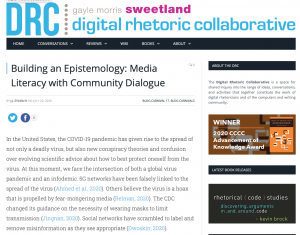
Building an Epistemology: Media Literacy with Community Dialogue
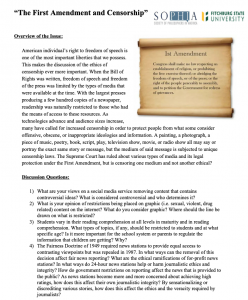
The First Amendment and Censorship
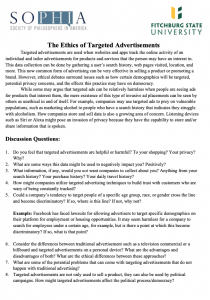
The Ethics of Targeted Advertising
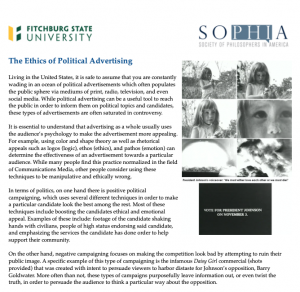
The Ethics of Political Advertising
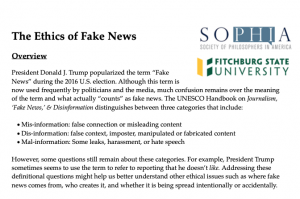
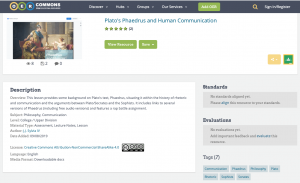
Plato's Phaedrus and Human Communication
- This lesson provides some background on Plato’s text, Phaedrus, situating it within the history of rhetoric and communication and the arguments between Plato/Socrates and the Sophists. It includes links to several versions of Phaedrus (including free audio versions) and features a rap battle assignment.
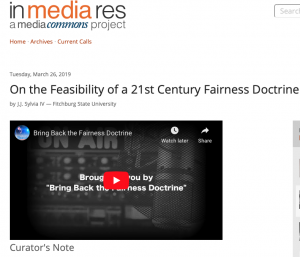
On the Feasibility of a 21st Century Fairness Doctrine
Increased concern over partisan media divides and arguments about fake news and the nature of truth have led some to call for a new Fairness Doctrine. This doctrine was a Federal Communications Commission (FCC) policy from 1949 to 1987 and required broadcasters to present contrasting views on controversial public issues. The short video above concisely summarizes the main arguments supporting a return of the Fairness Doctrine. However, it does not address some of the challenges associated with crafting such legislation.
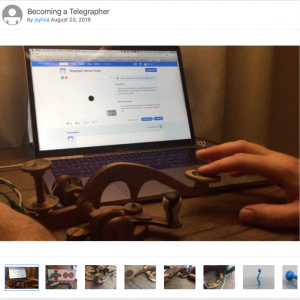
In this lesson, you’ll read some of the history of the telegraph and how it was shaped by and shaped society and culture. Then you’ll modify and print your own telegraph, before learning how to encode and send messages!
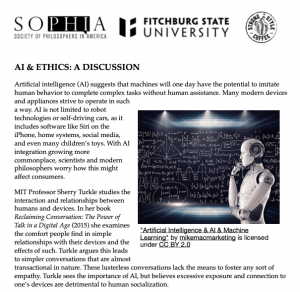
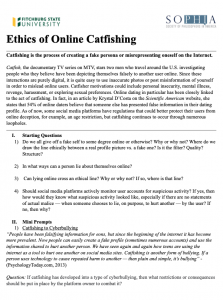
The Ethics of Online Catfishing
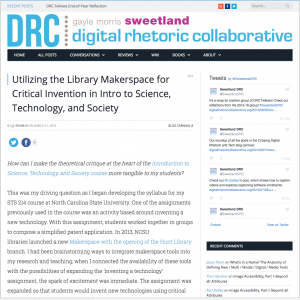
Utilizing the Library Makerspace for Critical Invention in Intro to Science, Technology, and Society
Introduction
How can I make the theoretical critique at the heart of the Introduction to Science, Technology, and Society course more tangible to my students?
This was my driving question as I began developing the syllabus for my STS 214 course at North Carolina State University. One of the assignments previously used in the course was an activity based around inventing a new technology. With this assignment, students worked together in groups to compose a simplified patent application. In 2013, NCSU libraries launched a new Makerspace with the opening of the Hunt Librarybranch. I had been brainstorming ways to integrate makerspace tools into my research and teaching; when I connected the availability of these tools with the possibilities of expanding the ‘inventing a technology’ assignment, the spark of excitement was immediate. The assignment was expanded so that students would invent new technologies using critical making tools such as micro-controllers, 3D printing, and augmented reality.
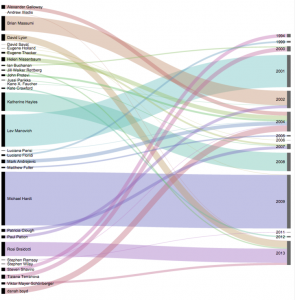
Visualizing My Interdisciplinary Field (Part 2)
This time I’d like to share some visualizations based on publication years and citations of the scholars working in my area.
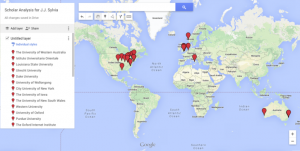
Visualizing My Interdisciplinary Field (Part 1)
I’ve recently been researching and attempting to visualize my field. I’ll share a little background about my program and then the first part of what this visualization process looks like.
My Ph.D. Program–Communication, Rhetoric, and Digital Media–is an interdisciplinary program between the Communication and English departments at North Carolina State University. One of the final courses that we take, before moving on to comprehensive exams and the dissertation process, is aimed at helping us develop a sense of the field in which we’ll be working. This process has taught me that it’s particularly important to do this for those of us who will be working in an interdisciplinary field.
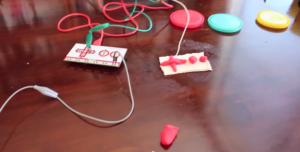
Techno Teaching Philosophy with the MaKey MaKey
During the recent discussions about new models, methods, and media for the dissertation, I was also taking part in a course on Technologies and Pedagogies in the Communication Arts. During the course, taught by Dr. Deanna Dannels, we were challenged to re-interpret our teaching philosophy through the MaKey MaKey.
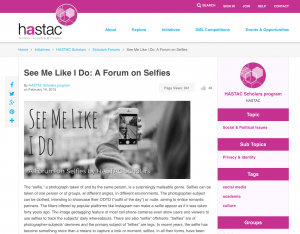
The “selfie,” a photograph taken of and by the same person, is a surprisingly malleable genre. Selfies can be taken of one person or of groups, at different angles, in different environments. The photographer-subject can be clothed, intending to showcase their OOTD (“outfit of the day”) or nude, aiming to entice romantic partners. The filters offered by popular platforms like Instagram can make a selfie appear as if it was taken forty years ago. The image geotagging feature of most cell phone cameras even allow users and viewers to use selfies to track the subjects’ daily whereabouts. There are also “selfie” offshoots: “belfies” are of photographer-subjects’ derrieres and the primary subject of “lelfies” are legs. In recent years, the selfie has become something more than a means to capture a look or moment; selfies, in all their forms, have been deployed for a variety of creative and critical purposes.
This forum takes up the hows and whys of selfie creation and circulation, paying special attention to the ways selfies act as a means of asserting agency in a variety of different contexts. Our hope is to combine perspectives on gender, sexuality, and surveillance as well as historical selfie precursors and the use of selfies in the classroom into one concentrated, scholarly forum. In our minds, the benefit of this forum over a scholarly article is that it can showcase the many ways the purposes and functions of selfies clash and create new configurations of creativity and power.
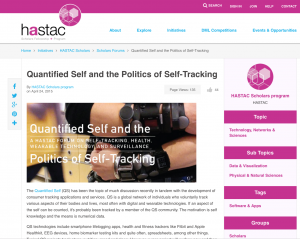
Quantified Self and the Politics of Self-Tracking
The Quantified Self (QS) has been the topic of much discussion recently in tandem with the development of consumer tracking applications and services. QS is a global network of individuals who voluntarily track various aspects of their bodies and lives, most often with digital and wearable technologies. If an aspect of the self can be counted, it’s probably been tracked by a member of the QS community. The motivation is self knowledge and the means is numerical data.
QS technologies include smartphone lifelogging apps, health and fitness trackers like Fitbit and Apple Healthkit, EEG devices, home biomarker testing kits and quite often, spreadsheets, among other things. Typical QS projects track steps, nutrition, mood and sleep. However, a rare project will surface now and then that interrogates such things like how often a self tracker’s values were exercised on a daily basis, the extent of a person’s material consumption, or even conversations and things heard over a decade, in the form of a searchable database!
In this HASTAC forum, we explore a community at the intersection of posthuman and transhumanist futures, as well as contemporary debates around digital health, surveillance and self governance. Through the forum, we hope to tackle some of the tough questions and challenges facing the quantified self community, including the politics of self-surveillance, the notions of data, identity, and agency inherent in QS practices, and its efforts towards subverting institutionalized knowledge production and reforming institutionalized medicine.
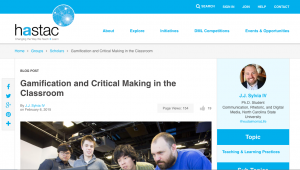
Gamification and Critical Making in the Classroom.
In the fall of 2014, I taught an Introduction to Science, Technology, and Society course (see syllabus) that incorporated gamification as a way to teach critical making as a kinesthetic practice to help elucidate the scientific and technologic theory in our textbook.
